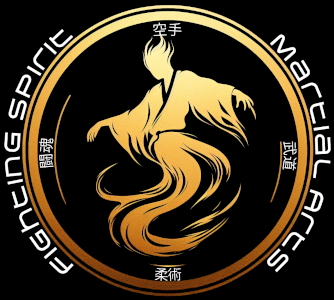- Article 1: Heian Shodan – In this article, we will explore the first kata in the Heian series, Heian Shodan. We will discuss the techniques and movements of the kata, as well as its applications in self-defence situations. We will also look at different variations of the kata that exist within Chito-Ryu and other styles of karate.
- Article 2: Heian Nidan – This article will focus on the second kata in the Heian series, Heian Nidan. We will examine the techniques and movements of the kata, as well as its similarities and differences to Heian Shodan. We will also explore the various interpretations and applications of the kata in different martial arts styles.
- Article 3: Heian Sandan – In this article, we will explore the third kata in the Heian series, Heian Sandan. We will examine the techniques and movements of the kata, as well as its advanced applications in self-defence situations. We will also look at variations of the kata within Chito-Ryu and other styles of karate.
- Article 4: Heian Yondan – This article will focus on the fourth kata in the Heian series, Heian Yondan. We will examine the techniques and movements of the kata, as well as its complex and challenging applications in self-defence situations. We will also explore variations of the kata within Chito-Ryu and other styles of karate.
- Article 5: Heian Godan – In this final article, we will explore the fifth and final kata in the Heian series, Heian Godan. We will examine the techniques and movements of the kata, as well as its advanced and dynamic applications in self-defence situations. We will also look at variations of the kata within Chito-Ryu and other styles of karate.
Chito-Ryu Karate is known for its unique style, which blends elements of traditional Okinawan martial arts with more modern techniques. The Heian Kata, also known as Pinan Kata, is a series of five kata that are essential to the Chito-Ryu curriculum.

The Heian Kata are believed to have originated in Okinawa and were developed by Anko Itosu, a famous karate master, in the early 1900s. They were later introduced into the Chito-Ryu curriculum by its founder, Dr. Tsuyoshi Chitose, in the mid-1900s.
Each of the Heian Kata has its own distinct techniques and movements; and builds upon the techniques learned in the previous kata. They are designed to be practiced both solo and with a partner and are often used in self-defence situations.
In the first article of the series, we will explore Heian Shodan, which is the first kata in the series. It is a relatively simple kata and focuses on basic techniques such as blocks, strikes, and kicks. It also introduces the concept of transitioning between different stances.
The second article will focus on Heian Nidan, which is the second kata in the series. This kata builds upon the techniques learned in Heian Shodan and introduces new techniques such as elbow strikes and knee strikes. It also emphasizes the importance of footwork and proper body mechanics.
The third article will explore Heian Sandan, which is the third kata in the series. This kata introduces more complex techniques such as throws and joint locks and emphasizes the importance of timing and distance in self-defence situations.
In the fourth article, we will explore Heian Yondan, which is the fourth kata in the series. This kata is more advanced than the previous three and focuses on techniques such as multiple strikes and takedowns. It also introduces the concept of circular movements in self-defence situations.
Finally, the fifth and final article will explore Heian Godan, which is the most advanced kata in the series. This kata focuses on techniques such as spinning kicks and jumping kicks and emphasizes the importance of fluidity and speed in self-defence situations.
Overall, this series will provide readers with a comprehensive understanding of the Heian Kata in Chito-Ryu Karate, and how they are used in self-defence situations. It will be an informative read for anyone interested in martial arts, especially those interested in Chito-Ryu Karate.
Additionally, the series will explore the history and origins of the Heian Kata, shedding light on their development and evolution over time. It will also highlight the unique features of Chito-Ryu Karate that make it stand out from other martial arts styles.
Each article will also discuss the variations of the kata within Chito-Ryu and other styles of karate, providing readers with a broader perspective on the use and interpretation of the kata. This will help readers appreciate the diversity and richness of martial arts, and how different styles can have their own unique approaches to techniques and movements.
The series will be of interest to both beginners and advanced practitioners of Chito-Ryu Karate, as well as anyone interested in the study of martial arts in general. The articles will be written in a clear and accessible style, making them easy to read and understand for anyone regardless of their level of knowledge on the topic.
In summary, the series will provide readers with a deep dive into the Heian Kata of Chito-Ryu Karate, exploring their history, origin, and curriculum inclusion. It will be an informative and educational journey for anyone interested in the study of martial arts and will help readers appreciate the rich culture and history behind these ancient fighting techniques.
Source Notes:
- “The History of Karate” by Yoshiaki Yokota and Mark Tankosich
- “Karate-Do Kyohan: The Master Text” by Gichin Funakoshi
- “Chito Ryu Karate” by Tsuyoshi Chitose
- “The Essence of Okinawan Karate-Do” by Shoshin Nagamine
- “The Kata and Bunkai of Goju-Ryu Karate” by Giles Hopkins
- “The Encyclopedia of Karate and Martial Arts” by Dr. A. Ratti and S. Westbrook
